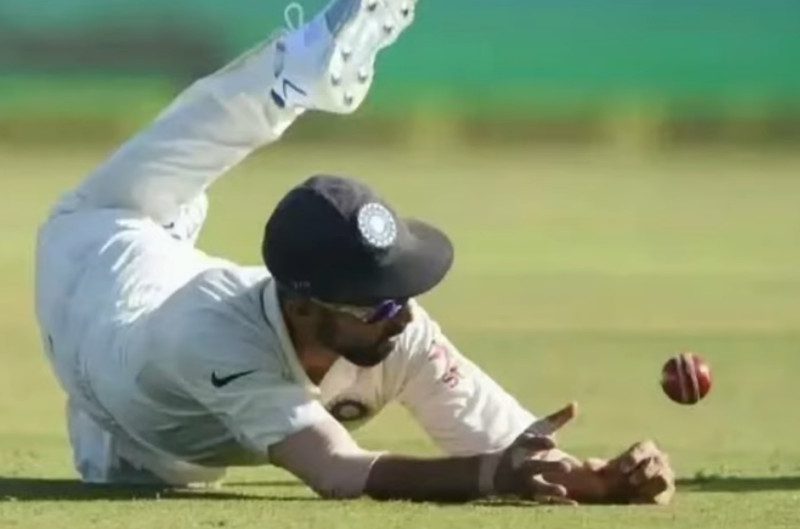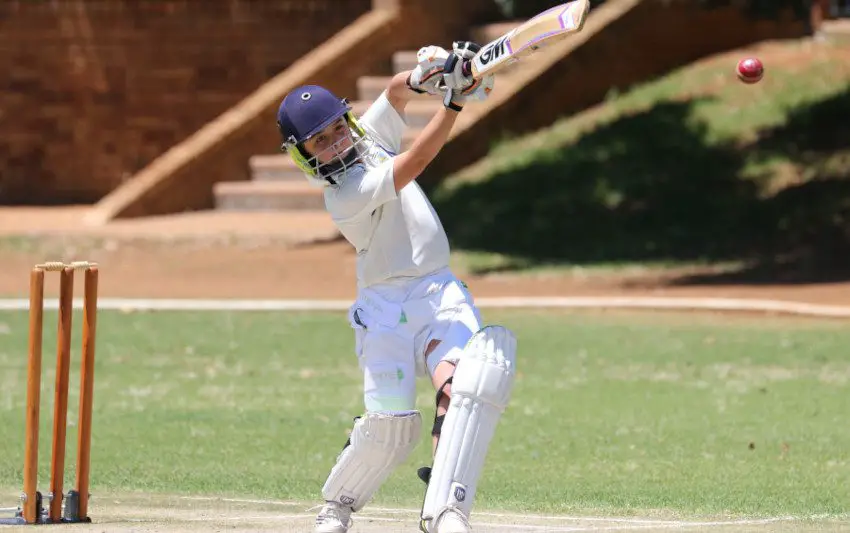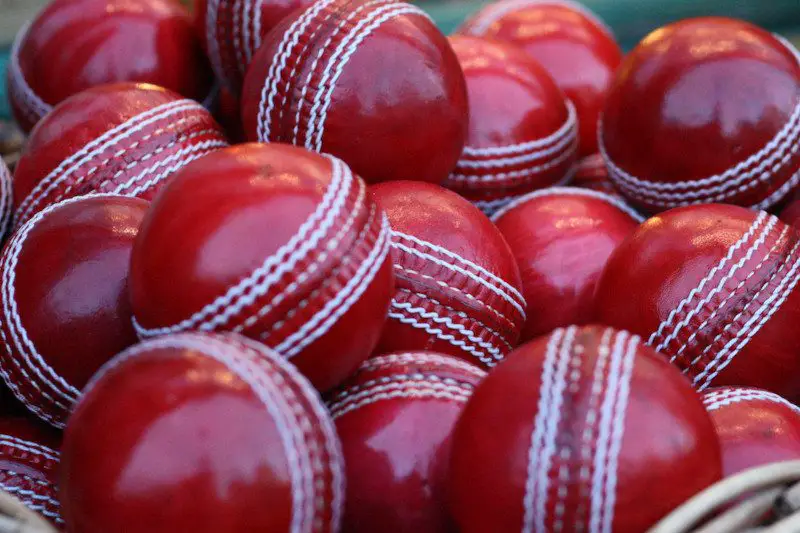Table of Contents
Injury prevention is the main reason why cricketers tape their fingers. The taped fingers help to redirect the impact of the ball towards the wrist which reduces the risk of a serious finger injury. Some cricketers also use tape to stop an existing injury from becoming worse.
Why Should Cricketers Tape Their Fingers?
Finger injuries are the most common injury in cricket. The hard ball travels at speed towards fielders who are not permitted to wear gloves, except for the wicketkeeper. The tape does provide some initial protection from the impact, but this is not the sole purpose of the tape.
Avoiding Finger Injuries
Fingers are not strong enough to constantly withstand the impact of the ball. The radiocarpal joint in the wrist is much stronger and more robust than the finger joints. By applying tape to the fingers, the energy from the impact is diverted down the finger towards the wrist, thus reducing the injury potential on the fingers. Yes, the impact can cause swelling and bruising but these are not serious injuries which require medical attention.
Taping is usually worn by fielders who are closer to the batter or who react to a ball travelling at different speeds and directions. Slip fielders, next to the wicket keeper, are most at risk of finger injuries due to the unpredictable nature of the ball travelling towards them.
Fielders who are further away from the batter have time to adjust their hands to the ball which slip fielders cannot. The slip fielders deal with balls travelling at head height, ankle height and those that bounce just in front of them. High reward when they successfully catch the ball, but high risk of finger injury as well.
Providing Friction for the Ball
By applying tape to the fingers, fielders can reduce the chances of the ball slipping out of their hands. This is a huge advantage for taking a catch, or in ground fielding. This is particularly useful in colder, early season games or when the ball becomes wet. This is not the primary role of the tape and fielders should be aware of this. Excessive tape can be questioned by the opposing team, or the umpires and they can request that the tape be removed.
Tape on the fingers is deemed acceptable, but some players have taped their palms to gain an unfair advantage. This is against the spirit of the game and is pushing the rules around the use of finger tape. It is clearly stated in the laws of the game that the ball may not come into contact with a foreign object. Tape constitutes this which is why umpires closely monitor those who wear tape.

Why Do Wicket Keepers Tape Their Fingers?
There is one player on the field who comes into a lot of contact with the ball and that is the wicket-keeper. They are the only fielder who is permitted to wear gloves due to the nature of their role. These gloves have a dimpled surface to assist them in catching the ball and have a webbing between the forefinger and thumb. The fingers also have protection in them which is made from rubber as they quite often catch or stop a ball that jams their finger into the ground.
In much the same way as out fielders do, wicket keepers tape their fingers too. In fact, it is rare for a wicket keeper NOT to do this. The theory is the same as the fielders in terms of diverting the impact energy towards the wrist area to prevent serious injury. Wicket keepers also wear thinner gloves with padded palms to further protect their hands.
What Tape Do Cricketers Use?
There isn’t a specific ‘cricket finger tape’ but there are plenty of sports and athletic tape available. Indeed, some sports such as jiu jitsu or rock climbing have their own tapes which provide quite rigid support which is great for wicket keepers to use. They are designed specifically for sport so don’t leave a sticky residue behind. Outfielders still need flexibility in their fingers so that they can grip the ball to throw it.
Generic bandage wrap is most common amongst fielders as it is flexible and breathable which is great for long days spent fielding. This bandage wrap also provides more friction than the rock climbing and jiu jitsu tape, so it is more preferable to slip fielders in particular. By choosing the beige-coloured tape, fielders are less likely to draw attention from umpires and opposition fielders compared to the white tape used in other sports.
How to Tape Your Fingers for Cricket?
This is quite often a 2-person job if more than one finger is being taped because tape is hard to handle with taped fingers. Even those players who regularly tape their fingers struggle to apply it correctly on their own. The tape is applied to the joint areas and not the whole finger so that the fingers can still bend as much as possible. Remember, the whole finger doesn’t need taping unless it is to conceal an existing wound.
Things to Prepare for Taping
As the old saying goes; fail to prepare, prepare to fail. If you are going to be taping your fingers you need to be prepared. There is a list of tools you will need to have available including alcohol wipes, the tape, and sharp scissors. Alcohol wipes are not as essential as you can clean your hands with soap and water. Scissors which are designed for a first aid kit are ideal as their purpose is to cut through clothing and bandages quickly and easily. Generic, paper cutting scissors will just rip the tape and make the whole process take double the time.
Cut Some Tape Pieces Ready
This makes the whole process so much easier and so much more efficient. If you are using the same person to help you then this is less vital as they will have a general idea on the length of the tap that you require them to use. If someone different is helping you then it is a good idea to pre-cut the tape for them. This means you are not wasting tape and the process of taping your fingers takes less time. For wicket keepers, there will be more pieces of tape to cut as they will be taping all their fingers for every game they play. Out fielders will not be taping as regularly so pre-cutting is not as vital.
Clean the Skin and Fingers
Treat the fingers in much the same way as you would a wound or a break in the skin. Clean the area first and make sure they are perfectly dry. Any moisture will affect the tape sticking to the fingers correctly as will dirt on the skin. If the tape is being used to protect an existing injury, making sure the wound is clean will speed up the healing process. Sticking tape over a dirty wound is likely to increase infection. It is advisable to have a dressing over as open wound before applying tape. One thing that is often forgotten is to make sure the person helping you has clean skin and fingers too. Moisture or dirt on their fingers will have the same problems and applying tape onto dirty skin.
Wrap the Fingers
Once the tape and fingers are prepared, it is now onto wrapping the fingers with tape. It is not the whole finger that is being wrapped as this will be restrictive. Not being able to bend the finger will have problems in collecting, throwing and catching the ball. If the whole finger needs protecting, then another option is needed. Tape should be applied to the knuckle areas to allow for maximum movement and also maximum impact protection. Remember, the purpose of the tape is to divert the impact from the fingers into the wrist.
Don’t Make the Taping Tight
A mistake that people make when taping their fingers is wrapping too tightly. The same is often true of cricketers. The tape must be tight enough to support the fingers but not too tight so that circulation is affected. There may be an element of trial an error in the early attempts. However, if wrapping fingers is going to be a regular occurrence, you will quickly work out how tight is tight enough.

Conclusion
Quite simply, finger injuries are common in a game of cricket. A hard ball, impacting on extremities is always going to be problematic. The use of tape is more and more common in the game so minimise injuries to fingers. The laws of the game must be adhered to by the players and must also be enforced by the umpires if an advantage is being obtained. Wicketkeepers are the players who will use more tape than other fields due to the nature of their role and position in the team.


